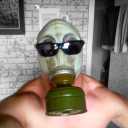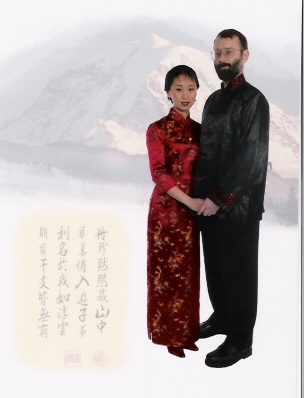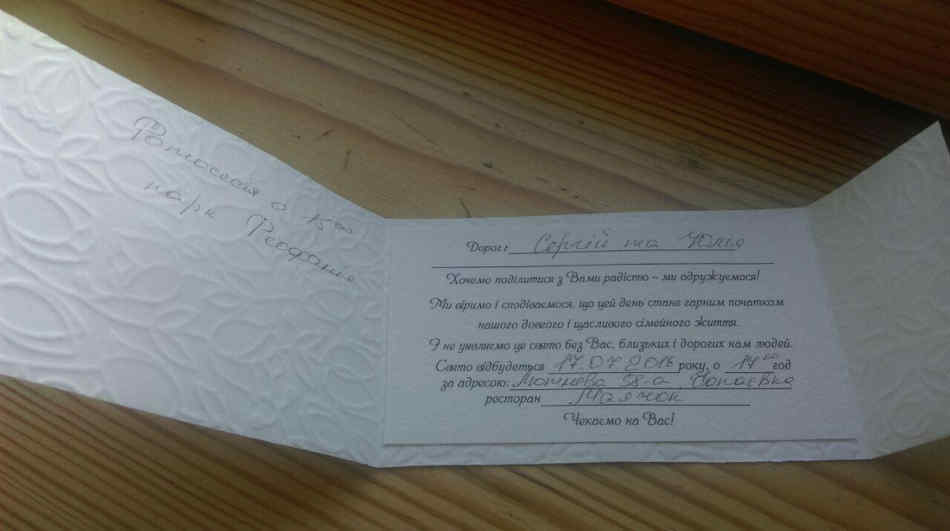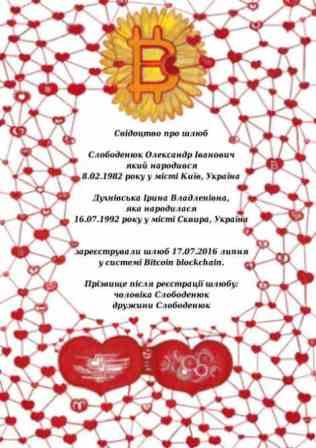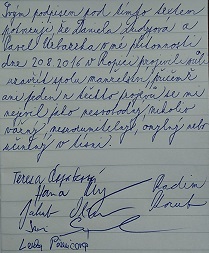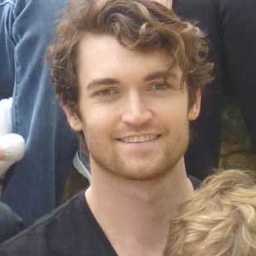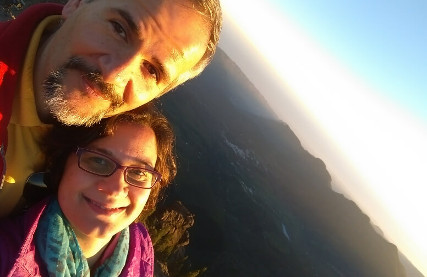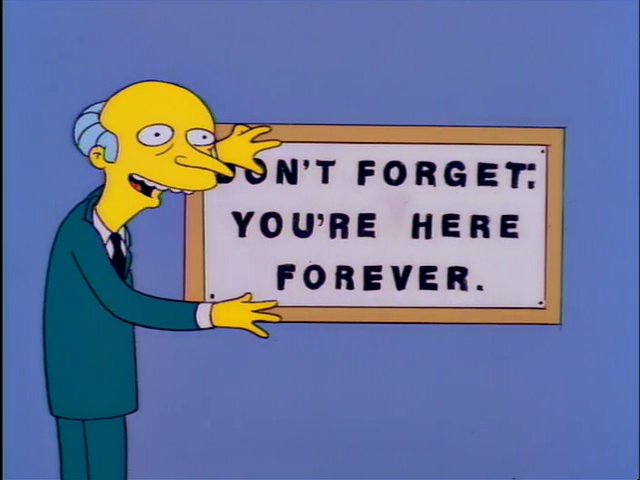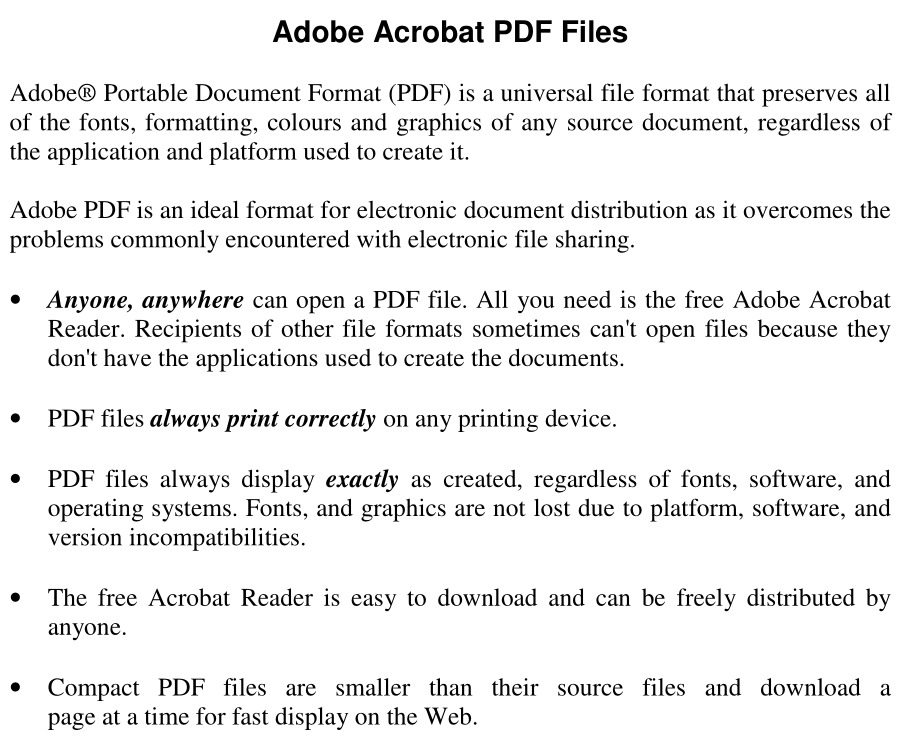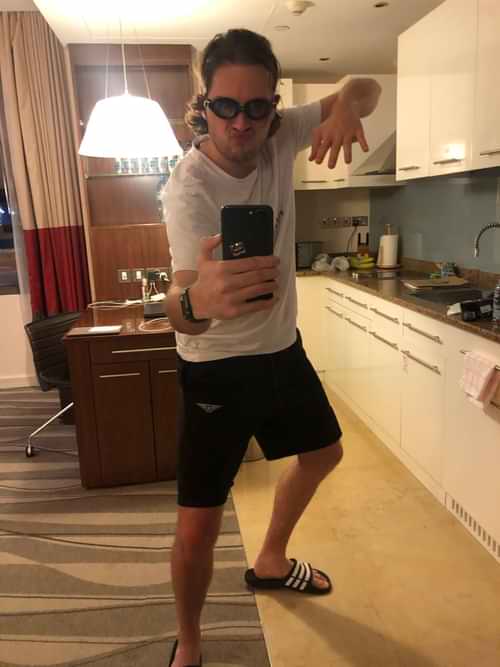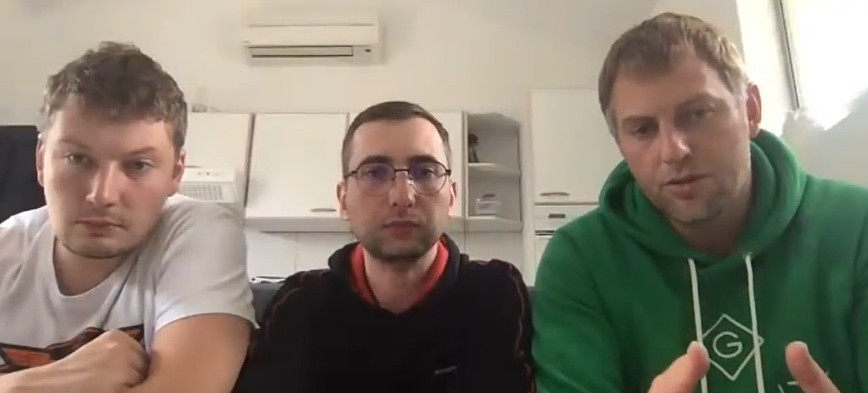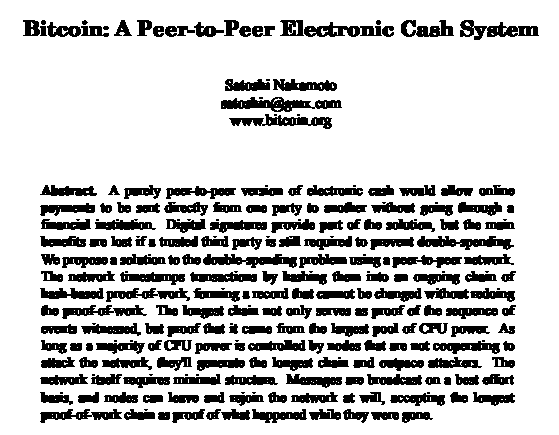This is a way to host a server that actually hide the IP of the server from the client, just like Tor hides the IP of the client from the server. Amazing tecnology!
This is why it enables hosting illegal things like the Silk Road: law enforcement is not able find where the server is hosted, and take it down or identify the owner.
What happens to the definition of the orthogonal group if we choose other types of symmetric bilinear forms by  Ciro Santilli 40 Updated 2025-07-16
Ciro Santilli 40 Updated 2025-07-16
We looking at the definition the orthogonal group is the group of all matrices that preserve the dot product, we notice that the dot product is one example of positive definite symmetric bilinear form, which in turn can also be represented by a matrix as shown at: Section "Matrix representation of a symmetric bilinear form".
By looking at this more general point of view, we could ask ourselves what happens to the group if instead of the dot product we took a more general bilinear form, e.g.:The answers to those questions are given by the Sylvester's law of inertia at Section "All indefinite orthogonal groups of matrices of equal metric signature are isomorphic".
- : another positive definite symmetric bilinear form such as ?
- what if we drop the positive definite requirement, e.g. ?
The only perfect cryptosystem!
Systems like advanced Encryption Standard allow us to encrypt things larger than the key, but the tradeoff is that they could be possibly broken, as don't have any provably secure symmetric-key algorithms as of 2020.
OMG, the second half of the game where the world becomes quite open and all backstories are revealed, is one of the best gaming moments ever.
Two parallel Josephson junctions.
In Ciro's ASCII art circuit diagram notation:
|
+-+-+
| |
X X
| |
+-+-+
|Man-made virus!
TODO: if we had cheap de novo DNA synthesis, how hard would it be to bootstrap a virus culture from that? github.com/cirosantilli/cirosantilli.github.io/issues/60
Is it easy to transfect a cell with the synthesized DNA, and get it to generate full infectious viral particles?
If so, then de novo DNA synthesis would be very similar to 3D printed guns: en.wikipedia.org/wiki/3D_printed_firearms.
It might already be possible to order dissimulated sequences online:
We get the time-independent Schrödinger equation by substituting this into Equation "time-independent Schrödinger equation for a one dimensional particle":
Now, there are two ways to go about this.
The first is the stupid "here's a guess" + "hey this family of solutions forms a complete basis"! This is exactly how we solved the problem at Section "Solving partial differential equations with the Fourier series", except that now the complete basis are the Hermite functions.
The second is the much celebrated ladder operator method.
Predicts fine structure.
Bibliography:
Dirac equation for the electron and hydrogen Hamiltonian by Barton Zwiebach (2019)
Source. Uses perturbation theory to get to the relativistic corrections of fine structure! Part of MIT 8.06 Quantum Physics III, Spring 2018 by Barton ZwiebachHow To Solve The Dirac Equation For The Hydrogen Atom | Relativistic Quantum Mechanics by Dietterich Labs (2018)
Source. All indefinite orthogonal groups of matrices of equal metric signature are isomorphic by  Ciro Santilli 40 Updated 2025-07-16
Ciro Santilli 40 Updated 2025-07-16
Following the definition of the indefinite orthogonal group, we want to show that only the metric signature matters.
First we can observe that the exact matrices are different. For example, taking the standard matrix of :and:both have the same metric signature. However, we notice that a rotation of 90 degrees, which preserves the first form, does not preserve the second one! E.g. consider the vector , then . But after a rotation of 90 degrees, it becomes , and now ! Therefore, we have to search for an isomorphism between the two sets of matrices.
For example, consider the orthogonal group, which can be defined as shown at the orthogonal group is the group of all matrices that preserve the dot product can be defined as:
In this section contains a list of images we could find that wre uploaded as raw data to the blockchain, without any special encoding, e.g. as done by the AtomSea & EMBII system.
It is possible that some/most of those were uploaded via the cryptograffiti.info system, but since that indexer stopped working, and since the format is so non-specific, it is not possible be sure as far as we can tell.
These images were indexed by looking for standard transaction output script hashes that contain JPEG or PNG images immediately on the first payload byte based on file signature bytes and indexed/easily downloaded at github.com/cirosantilli/bitcoin-inscription-indexer#image-indexing-and-download.
western-union-bitcoin-spoof.jpg.gz
. 200f3f6f8a91ae438d1924e5cedca98cea7f0197b9eba11343948b5621ca19ed block 331804 (2014-11-27) JPEG in Gzip as a single input script constant.
This ad highlights one of the claimed potential advantages of Bitcoin: cheaper/faster cross border transactions.
This inscription is highlighted at Data Insertion in Bitcoin's Blockchain by Andrew Sward, Vecna OP_0 and Forrest Stonedahl. Finding Gzips with binwalk is hard because the file signature is only 2 bytes long (1F 8B), so there are lots of false positives.
Gzip binary uploaded at: raw.githubusercontent.com/cirosantilli/media/master/bitcoin-inscription-indexer/data/bin/200f3f6f8a91ae438d1924e5cedca98cea7f0197b9eba11343948b5621ca19ed.jpg.gz gunzip 1.12 complains:but we were not able to fix that: removing bytes at the end goes straight from "trailing garbage" to "incomplete file" after a certain byte.
western-union-bitcoin-spoof.jpg.gz: decompression OK, trailing garbage ignoredSuper Mario coin sprite
. tx bf7ef3216ae09f8252c76e7d0031bc4aa131a23a6900f8371c44ffde7957c8da (2015-03-01). Possibly from Super Mario World for the SNES (1990). No doubt a self-reference to Bitcoin itself. Encoded as a data URL for a PNG image:<img src="data:image/png;base64,JPG thumbnail
. Presumably a JPEG upload test. tx 515a95381e511141229966d722db19db7da66a0d629b1f883d296287632e72b3, block 349362 (2015-03-26) via cryptograffiti.info.A heart next to a bitcoin logo and written "we love bitcoin". Reproduced at: kryptomoney.com/grayscale-report-institutional-investors-retirement-funds-love-bitcoin/
Embedded in the image itself, there's a message in the header comments:which is the opening paragraph of: bitcoin.org/en/
Bitcoin uses peer-to-peer technology to operate with no central authority or banks
tx b70bfe6a9b314611655554576feb11f15d47b9e80c5993e91829bb87895ef23c block 355899 (2015-05-11). PNG inscribed as a Daisy chain Bitcoin inscription using OP_RETURN.
The daisy then follows up to the Figure 6. "City of London School logo", which therefore must be by the same uploader.
City of London School logo
. tx 6ab2f3dbff0ebd856f6cf0360fc7db987f8789508dfdefdcc1f9e2aacf9ac0de block 355901 (2015-05-11). PNG inscribed as a Daisy chain Bitcoin inscription using OP_RETURN.
This image is encoded on the very same daisy chain as Figure 5. "The Economist logo", immediately afterwards.
The transactions leading up to b70bfe6a9b314611655554576feb11f15d47b9e80c5993e91829bb87895ef23c contain multiple text daisy inscriptions that show up on our text dumps at: github.com/cirosantilli/bitcoin-inscription-indexer/blob/e716e317b703e1bad63edf5064f90f5e80c5aaf5/data/out/0355.txt#L635
- 5256d3059520c9ecda22bcf17776adcc962a5ae90333efbb00cf45818e9bf0bb:then a quote from bitcoin.org/en/faq (archive):
You're poo you're papa, says WeeWaWeeWa
then:Bitcoin is the first implementation of a concept called "cryptocurrency", which was first described in 1998 by Wei Dai on the cypherpunks mailing list, suggesting the idea of a new form of money that uses cryptography to control its creation and transactions, rather than a central authority. The first Bitcoin specification and proof of concept was published in 2009 in a cryptography mailing list by Satoshi Nakamoto. Satoshi left the project in late 2010 without revealing much about himself. The community has since grown exponentially with many developers working on Bitcoin.
And now, via JSON-RPC!
- d6b006f3cd9b545d5015263e954dae7c52c71bb5f4a0573918ff0e1ce8785de4 contains another quote from bitcoin.org/en/faq (archive):followed by:
Much of the trust in Bitcoin comes from the fact that it requires no trust at all. Bitcoin is fully open-source and decentralized. This means that anyone has access to the entire source code at any time. Any developer in the world can therefore verify exactly how Bitcoin works. All transactions and bitcoins issued into existence can be transparently consulted in real-time by anyone. All payments can be made without reliance on a third party and the whole system is protected by heavily peer-reviewed cryptographic algorithms like those used for online banking. No organization or individual can control Bitcoin, and the network remains secure even if not all of its users can be trusted.
One day this will be for general storage
- d9450fbd228d7a19d08f700d43200184b0d46561ffd7eb9ddbb378435ec66789 says:These inscriptions were made right in the midst of the protests against larger block sizes.
Let's agree on 5MB blocks and move on?
- a689707f77882eb5a3b1954747f159b1c22b688a57ec17b4d636b7f94e451e3dthen the intro from bitcoin.org/en/ (archive):then:
Bitcoin uses peer-to-peer technology to operate with no central authority or banks; managing transactions and the issuing of bitcoins is carried out collectively by the network.
Parents daisy more text visible on our text dumps: www.blockchain.com/explorer/transactions/btc/b70bfe6a9b314611655554576feb11f15d47b9e80c5993e91829bb87895ef23cIt's my cake day. I pressed the button. I have no regrets. Just stick it on the blockchain
Iranian lady with polar bear hat.
tx b673c7d0c62cce8315ad6cc63a2c8ca8169bf73432435760b808735e1a7fe0e2 block 401255 (2016-03-05). JPEG encoded with daisy chain Bitcoin inscription using OP_RETURN.
The image data is cut in half. This makes the image an invalid JPEG, but ImageMagick is able to recover and convert to a valid image which is what we show here to make it portable to more browsers. The raw invalid image is present at: raw.githubusercontent.com/cirosantilli/media/master/bitcoin-inscription-indexer/data/bin/b673c7d0c62cce8315ad6cc63a2c8ca8169bf73432435760b808735e1a7fe0e2.jpg, but it can also be generally viewed by most viewers.
This embedding uses a novel more specialiezd protocol on top of a raw daisy chain Bitcoin inscription.
The daisy actually starts at f49e79889b34d355fa8a02f13b9db4ed69c067f975e25339737ef10e4b993d7a and data is encoded as follows:
OP_RETURN 62 00000000 48656c6c6f20776f726c64212052657475726e20626c6f622070726f746f636f6c2076
OP_RETURN 62 00000001 313a204d41474943203d20307836322c205041434b414745203d2075696e7431362c20
OP_RETURN 62 00000002 53455155454e4345203d2075696e7431362c205041594c4f4144203d20757020746f20
OP_RETURN 62 00000000 48656c6c6f20776f726c64212052657475726e20626c6f622070726f746f636f6c2076
OP_RETURN 62 00000001 313a204d41474943203d20307836322c205041434b414745203d2075696e7431362c20
OP_RETURN 62 00000002 53455155454e4345203d2075696e7431362c205041594c4f4144203d20757020746f20
OP_RETURN 62 00000003 33352062797465732e0a
OP_RETURN 62 00010000 ffd8ffe1001845786966000049492a00080000000000000000000000ffec0011447563
OP_RETURN 62 00010001 6b79000100040000003c0000ffe1039a687474703a2f2f6e732e61646f62652e636f6d
OP_RETURN 62 00010002 2f7861702f312e302f003c3f787061636b657420626567696e3d22efbbbf222069643d
OP_RETURN 62 00010003 2257354d304d7043656869487a7265537a4e54637a6b633964223f3e203c783a786d70
...
OP_RETURN 62 00010085 51290358a41fe5408b4435254208d4810a5fe9113044c1ae3aa544656d729756395b87
OP_RETURN 62 00010086 c4e261f55c5d19e1c792c3f78adff1368db58e5a0bb85b2c6753c42de6d973edae0642
OP_RETURN 62 00010087 1b2c8370f203aaa0a6eb7ea0871d8e9ae6534b785b57347171e4df6a5463d7ce77b93b
OP_RETURN 62 00010088 9b8bf96edd1b982e2474a41ad28e3c01e74586d1d1ad7a874c5a1b7c742d2285c371f6The first block is:which then gets repeated, probably an error, but now with the sentence completed:This therefore gives us the name of the protocol as "return blob protocol". We also understand that the 0x62 was aconfiguration parameter.
Hello world! Return blob protocol v1: MAGIC = 0x62, PACKAGE = uint16, SEQUENCE = uint16, PAYLOAD = up to
Hello world! Return blob protocol v1: MAGIC = 0x62, PACKAGE = uint16, SEQUENCE = uint16, PAYLOAD = up to 35 bytes
ffd8ffe1 marks the start of the JPEG.If the rest of the image were inscribed somewhere random in the blockchain, we'd expect to find the string
6200010089 containing the netxt data chunck on a nearby block, but bgrep did not find it, so perhaps the data just isn't there.The last tx of the daisy is 43b182065ab2c7d1908ec3cee756d9f626c1e4bd1efa17a7c3993433b653d499 which is followed by 9e6838a3545bd59a708d0c177d6840c7d82b8ac6220138ca3d8133a1376405aa which does not contain any data.
Erich Erstu
. Alias: 1Hyena. A well built man wearing a gas mask. Google image search leads to: github.com/1Hyena (archive), who is the creator of cryptograffiti.info. It was around after this time that the number of raw images surged dramatically in the blockchain, so it is possible that this is when the service started operating. This further suggests that most raw image uploads we found were made with cryptograffiti.info. tx c206e8fff656f07b27dac831ef9b956792bae4e76a2cb43f14f49f0298bf2c2f, block 416527 (2016-06-16). Embedded text:Hyena was here on the 16th of June 2016.
Water Deer
. badtaxidermy.com "Water Deer" image, visible at: web.archive.org/web/20200527070011/http://www.badtaxidermy.com/?page=3. tx 357e8ae080e5a1b554eaec2953e3e6e2e7955f3af4559dd0f1bc6381d56aa183, block 416735 (2016-06-16) via cryptograffiti.info. The file contains the strings:www.badtaxidermy.com
Cryptograffiti.info now allows you to attach JPEG images to your messages.
hotmine.io
. A mining supplier: hotmine.io/en. twitter.com/uahotmine. tx 8ec01c5e8f3b57adb13079af3b7e40e7acd3986a5ed14325388405771bd43f9b, block 416835 (2016-06-18) via cryptograffiti.info. The file contains the following string embedded into it:Smart Heating, Bitcoin Mining For You - en.hotmine.io
Nada from They Live (1988)
tx 83df1e5ecc1c7ac455d2855e15cff8fa5771afe2ad1796c8b6b1a8e910e829c4, block 416896 (2016-06-18) via cryptograffiti.info. The file has the following string embedded into it:which is a reference to Nada's original dialogue:
Cryptocurrency Minning ad
. Twitter "@dobcrypto": twitter.com/dobcrypto Reuploaded at: imgur.com/gallery/00oOuhm. tx eda07af9584391bb6f5ebb07ba57a51b610751fdf06ae49d9166225c36d97d0b, block 417111 (2016-06-20) via cryptograffiti.info. The file contains the following string:Subscribe, I will be glad to see you! www.youtube.com/c/dobcryptocurrency
Chinese wedding
. tx 609d5e0f968c0ab7abc2be21468cfd552483d38b08e6df23d27766eb61b9be3c, block 417131 (2016-06-20) via cryptograffiti.info.
A white man and a Chinese woman wearing Chinese traditional dressess holding hands, presumably a token from their wedding. A Chinese poem is visible next to them, with four vertical setences made up of 7 characters each, to be read from right to left. This is a classic Classical Chinese poetry form known as qijue.
A photo of a snowy mountain is shown in the background, fitting the theme of the poem. It looks like an European mountain, possibly Mont Blanc? TODO identify. Perhaps a reference to the nationality of the husband.
TODO transcribe the Chinese text, cursive grass script + traditional characters + ultra-low res put this beyond Ciro Santilli's capabilities/patience ratio. Ciro Santilli's wife's transcribed gave the first column as:and no Google hits, so maybe an original poem? What a hero. TODO transcribe the rest.
The image file contains the English transalation of the Chinese poem embeded into it:
A scarlet gemstone hides quietly in the midst of the mountains.
Its beauty softly enters the wanderer's dreams.
Fame and fortune become like drifting clouds
But the gem endures like the constellations above.
Superbuffo
. Googling gives a Toni Caradonna: twitter.com/superbuffo. At twitter.com/Superbuffo/status/1620900765014556672 that twitter account claimed the art or its depiction. www.imdb.com/name/nm9516368/ has some obscure references to him. tx 6240f61bbaeac66cd623e921a153addaf5f379a996f2de0f0c6506d628fe3812, block 417354 (2016-06-21) via cryptograffiti.info. The file contains the following string embedded into it, in addition to a lot of Adobe boilerplate:Superbuffo the first comedian on the blockchain
Rene Angelil and Celine Dion
. Reproduced at: web.archive.org/web/20191130174338/https://people.com/celebrity/inside-celine-dion-and-rene-angelils-21-year-marriage/ but cropped to faces. tx e2e5b9cf04d93ae5fc1b54e9208b92b668823e014b251f57510e4702661fa1a6, block 417272 (2016-06-21) via cryptograffiti.info. Embedded text:You will be here forever
New Age dance
. Woman dancing a New Age-like dance with New Age-like Indian looking clothes, holding a lamp, and with a rose on her hair. TODO identify. tx 0602dd1b375bc71818db0a40d7a14f438499af3eda9056125eb5a1b74bed790b, block 419676 (2016-07-07) via cryptograffiti.info. The image contains the following text embedded into it (TODO unknown mechanism, does not show up on exifTool:No alcohol and smoking since 07.07.2016. Love girls!
Snake penetration sculputure
. Sculpture of what seems to be a snake penetrating a vagina. tx 83f412eb7ff40fe542901186a6d37cba0eb4f8458c574bc02a6f7236c599fe07, block 420122 (2016-07-10) via cryptograffiti.info.Wedding invitation
. TODO: make out names, quite low res, no patience. Looks like Cyrillic script. tx 01c3af71c12d49260231dcb3cc86d6ff21b3cd90878e9556482ef3b0908abffe, block 420960 (2016-07-16) via cryptograffiti.info.Wedding Wallled 15Nz214yv76BmkKLCi8kAVssa5C7nQHLjx
Oles Slobodenyuk
. tx 10cc5d45396ba271659a4b00d2f70c433533227e5f7ea30bb5bd3c8563d7468a, Block 421280 (2016-07-18) via cryptograffiti.info
Wedding picture with people holding "Blockchain" and "Ipa" signs.
Reproduced at: web.archive.org/web/20200926150213/https://freebitcoins.com.ua/zapushhen-ukrainskij-bitkoin-pul-bitcoinukraine/ Google translate:
Oles is for example featured at: uk.sports.yahoo.com/news/bitcoin-miners-heating-homes-free-133053106.html Bitcoin Miners Are Heating Homes Free of Charge in Frigid Siberia by Anna Baydakova (2019)
The image file contains the following text embedded into it:The link is dead of course.
<Wedding date: Jul 17, 2016
proof link goo.gl/photos/2GToBx1WqRyiQtxQ6
Nematode
. A... nematode-like shaped hand drawn extremely simple image? A test upload presumably? The squiggle outside of the worm might be a test direction marker. tx 554846025e808df7adec3b1d099e3d4d54b7367cddaa959939cb5ca0fc6abf7b, block 424414 (2016-08-09) via cryptograffiti.info. The image file contains the following string embedded into it:Hand written contract
. Wedding contract written in Czech. Transcription and translation by Petr Kadlec:Translation:Signatures:
Svým podpisem pod tímto textem potvrzuji, že Daniela Dudysová a Pavel Urbaczka v mé přítomnosti dne 20.8.2016 v Ropici projevili vůli uzavřít spolu manželství, přičemž ani jeden z těchto projevů se mi nejevil jako nesvobodný, nikoliv vážný, nesrozumitelný, omylný nebo uzavřený v tísni.
With my signature under this text, I confirm Daniela Dudysová and Pavel Urbaczka have, in my presence on 2016-08-20 in Ropice, expressed the will to enter marriage, whereas neither of their expressions seemed to me to be non-free, not serious, in error, or under distress.
Tereza (unreadable) Hana (unreadable) Jakub (unreadable) Radim Kozub (unreadable) (unreadable) Lenka (unreadable)
Petr also conjectures that Jakub may refer to Jakub Olšina from Blockchain Legal. Figure 23. "Wedding on grass" on the same block contains a image of a wedding, presumably the same of the contract. The photo of the man might be the same person as www.linkedin.com/in/olsinajakub/, but a bit younger.
Wedding on grass
. tx 693848d56098a0ad16736bea7f24336c9b47a7f0a6f776659e8d01f00b46af76, block 426072 (2016-08-20) via cryptograffiti.info.
The file contains the following text embedded into it:which is Czech for:So it is a followup to Figure 22. "Hand written contract".
Danila a Pavel se právě vzali!
Danila and Pavel just got married!
Onshape ad
. Ad for www.onshape.com/en/, an online CAD company:#CAD users all over the world are designing in the cloud! Join them by creating a #free Onshape account: hubs.ly/HO3vJ6tO. tx c0bb963cb3ceffc49059f09db94e3fd73caa3b7a8e005160d49e99020ff6b51a, block 426832 (2016-08-25) via cryptograffiti.info. Embedded text:@Onshape - The Future of Professional CAD
Pepe the Frog
. ca933de16b6466e40b37c7ee0ec0dcd9a56bc365a567a5fff81ba4927dd61e23 (2016-10-17) via cryptograffiti.info. Embedded text:In Pepe We Trust
#BITCOINPEPE
Hello. Yes, this is dog
. knowyourmeme.com/memes/yes-this-is-dog. tx 4b0cd7e191ef0a14a9b6ab1c5900be534118c20a332ff26407648168d2722a2e, block 440418 (2016-11-24) via cryptograffiti.info.Ross Ulbricht
. Exact image also reproduced at: ethereumworldnews.com/ross-ulbricht-attorney-dismiss-2018/. tx b25ba2080d15c1277569bd2fee707a216c4e2ee0a1f479349c2309651c261511, block 442225 (2016-12-06) via cryptograffiti.info. Embedded text:Tuxedo and rose
. Black and white and intentionally blurred photo of couple, the woman wears a tuxedo, and the man holds a red rose/light-like thing in the middle. tx c67dca17d3e5544d8d2c70d143196e1c1438a09c7371b80086d0a71ec5aec3c8, block 453083 (2017-02-14) via cryptograffiti.info.Couple on mountains
. Middle aged couple selfie in front of some mountains. tx 00a64f2ff9aae7a34c21d07b8fc9bad79989f25295ccbddc6fbe73b3685b65a9, block 456370 (2017-03-09) via cryptograffiti.info. The file contains the following Spanish poem, whch confirms that their Spanish looking faces are actually Spanish, perhaps they are at the Pyrenees:Sometimes we are almost two strangers,
strange as strange as they are different,
but we deceive ourselves, you know it, I know it,
actually we are very inside
the same truth.Hidden in your eyes
my most beautiful dreams sleep,
when do you open them in front of me
They wake up happy and cheerful.
Tank Man
. tx ca4f11131eca6b4d61daf707a470cfccd1ef3d80a6f8b70f1f07616b451ca64e, block 458238 (2017-03-21) via cryptograffiti.info.
See also: Section "China".
Searching for the image hash ca4f11131eca6b4d61daf707a470cfccd1ef3d80a6f8b70f1f07616b451ca64e leads to archive.4plebs.org/pol/thread/191157608/#q191162145 which links to the now dead as of 2021: cryptograffiti.info/#ca4f11131eca6b4d61daf707a470cfccd1ef3d80a6f8b70f1f07616b451ca64e.jpg.
Mr. Burns You're here forever
. tx 94e319d09fc236fb9d7a24e60af8f47ed41ca3cc01e9950c925d806153ed8aa3 block 460435 (2017-04-05)
Mr. Burns from The Simpsons showing a sign:Still from S06E13 of The Simpsons. A reference to the immutability of the blockchain.
Don't forget, you're here forever
This transaction is given at Data Insertion in Bitcoin's Blockchain by Andrew Sward, Vecna OP_0 and Forrest Stonedahl. We've decoded it with:TODO understand the encoding better. Our indexing scripts Bitcoin Inscription Indexer missed it because the image is encoded on starting on the second constant of the input script and not the first.
btc getrawtransaction 94e319d09fc236fb9d7a24e60af8f47ed41ca3cc01e9950c925d806153ed8aa3 true | jq -r '.vin[].scriptSig.asm' | sed -r 's/^[^ ]+ //' | sed -r 's/ [^ ]+$//' | tr -d '\n' | xxd -r -p > tmp.jpgThis was missed by binwalk because it does not index the valid JPEG signature "ffd8ffdb"... we should patch it... github.com/ReFirmLabs/binwalk/blob/cddfede795971045d99422bd7a9676c8803ec5ee/src/binwalk/magic/images#L107
Augustana College Old-Main.jpg
. tx 033d185d1a04c4bd6de9bb23985f8c15aa46234206ad29101c31f4b33f1a0e49 block 474586 (2017-07-07)
First tx 1e347cf7521a1318ef31af4f5758efbc45f1bb2a7db9bc1cc469bfe93599eaf7 sets up 48 P2SH outputs and gives ASCII message
Augustana College Old-Main.jpg Reconstruct with data preceding redeemscripts
Then tx 033d185d1a04c4bd6de9bb23985f8c15aa46234206ad29101c31f4b33f1a0e49 redeems those with 48 input scripts that encode the image with ASCII message:
Augustana College Old-Main.jpg Reconstruct with data preceding redeemscripts
Encoded with Two-stage P2SH inscription. Mentioned at: Data Insertion in Bitcoin's Blockchain by Andrew Sward, Vecna OP_0 and Forrest Stonedahl. See also this ASCII art by the same authors: Code "Study Math and Computer Science at Augustana College". Previously mentioned at: twitter.com/ottosch_/status/1735297943563837726
PDF demo
. tx b4f537bc536c392d425af0693e3282bbf697df01debeeaf7f9918b93af6bdd14 block 474646 (2017-07-07) via cryptograffiti.info contains a single page 7.9 KB PDF sample file also present e.g. at: www.studocu.com/en-gb/document/harrow-college-uxbridge-college/assessing-risk-in-sport-unit/pdf-sample-its-nothing-dw/61244699. This image is a screenshot of the PDF made manually to make it easier to view here, the actual inscribed file has been uploaded to: raw.githubusercontent.com/cirosantilli/media/master/bitcoin-inscription-indexer/data/bin/b4f537bc536c392d425af0693e3282bbf697df01debeeaf7f9918b93af6bdd14.pdf. The first lines of the document read:Adobe® Portable Document Format (PDF) is a universal file format that preserves all of the fonts, formatting, colours and graphics of any source document, regardless of the application and platform used to create it.
Cat manga
. TODO identify, transcribe japanese. tx 4986e9cd20b75bb534df92e60b232945e18274f4c46d25b8853af9bdda5166b8, block 581526 (2019-06-20).Arms crossed
. Nerdy caucasian woman in her late teens/early 20's wearing glasses and a jeans jacked with her arms crossed. TODO identify. tx a55e5e7492848445a9f9ecf55ce566242c9d95e6c46a171fd94a345e8b74c355, block 597374 (2019-10-01) with P2FKHBlack cat
. No, Google reverse image search is never going to find the exact one amongst billions of pics. tx 8cf28eb9ac221d8cd15298b9ae63eca910b536a5234c133c7e364b29a4e39d21, block 625045 (2020-04-09) with P2FKH.The Starry Night by van Gogh
. tx 225ed8bc432d37cf434f80717286fd5671f676f12b573294db72a2a8f9b1e7ba, block 685647 (2021-05-31) Stored on SegWit. Googling leads to this hit: github.com/aureleoules/bitcandle by French programmer Aurèle Oulès which is an obscure uploader not known to us before this transaction was found.
tx 8dc2785335c59df6c00257f9b20e5df9b932a717f97066b279e292faba71a67a block 685737 contains another one, but with a slightly different encoding, presumably Aureole was trying out different things.
tx 3110f49fb6047d62e6fa198a0a4b180d9abf7075d6f29472747990ae286295cb block 690497 (2021-07-10). JPEG using P2FMS
This P2FMS has the peculiarity that each payload constant is preceded by a
04 byte which must be thrown away, we've decoded it manually with:bitcoin-core.cli getrawtransaction 3110f49fb6047d62e6fa198a0a4b180d9abf7075d6f29472747990ae286295cb true | jq -r '.vout[].scriptPubKey.asm' | head -n-2 | sed -r 's/^....//;s/ 3 .*//' | tr -d ' \n' | xxd -r -p > tmp.jpgThis transactions is also mentioned at: github.com/bitcoin/bitcoin/pull/28400 "Make provably unsignable standard P2PK and P2MS outpoints unspendable"
Gulagu.net logo
. tx 9c1a5d5a9e65e9a35050d67574681695a5c46a3df3feb27834848daa49c2fb92 block 710352 (2021-11-19) Logo of gulagu.net/, a "Russian anti-corruption, anti-torture human rights organization and website"[ref] Two-stage P2SH inscription.Gulagu.net people
. tx 36e7f004ff22aa1146a00705d166fbca64d174c472a5296ed1f38d4749a74e10 block 710354 (2021-11-19). Rightmost Vladimir Osechkin. Two-stage P2SH inscription.Low resolution GIF screenshot of the Bitcoin whitepaper intro
. tx cad2c46b0f7feb56191f2ab7d8ed59184615cbf0ca46af8c8b5a21a2045a42d2 block 724270 (2022-02-21). Inscribed with P2FKH.
data:image/jpeg;base64tx 976e0766ebe0528d44595170f83f46ab1304c0a3b809f16454ee9be0e816e3a3, block 921133 (2025-10-28) contains an OP_RETURN encoded MP4 AI generated video of Bitcoin Core developer Gloria Zhao standing up and showing her buttocks. This transaction takes up most of the block with an Ethereum tatoo on her lower back. Presumably it is from someone criticizing Gloria's design choices regarding inscriptions on the blockchain. Also mentioned at:
TODO decode:
- get all from Data Insertion in Bitcoin's Blockchain by Andrew Sward, Vecna OP_0 and Forrest Stonedahl, some are missing. TODO list then explicitly here
- 6fa03193609f6506c2fa76540fa9930adf68d50b21c942434a90486a694ccacd contains a JPEG in its input script but a bit broken. The script contains a single constant. We could not decode it by looking at nearby transactions either
ASCII art of a Force of Will, a famous and powerful Magic: The Gathering card first printed in 1996.
This is Ciro Santilli's personal favorite ASCII art he has found in the blockchain so far. Also Ciro could not find any other previous source of this, so there is some chance it is original. One can dream.
The choice of card is probably linked to the function of the card in the game of Magic: The Gathering. This card essentially prevents the opponent from casting a spell they are about to cast. The presumed intended meaning of this art is further accentuated by the old card type term "interrupt" (late renamed to "instant"), which suggests that "this ASCII art is an interruption to the normal monetary transactions of the blockchain".
One of also reminded of the prayer wars interruption attempts. We could not however identify anything specific that this ASCII art might have tried to interrupt besides the normal flow of monetary transactions.
If one goes full art critic mode, it is also tempting to draw a parallel between the card's "You may pay 1 life" alternative casting cost (as opposed to 5 mana, 3 and two blue, which is a very large cost for most games) as being a reference to the money spent by the uploader of the art to upload it.
TODO understand exactly how it was encoded and why it is so weird. The
UUUU has a slightly weird encoding which we fixed by hand here TODO understand. -------------------------------------
| Force of Will 3 U U |
| --------------------------------- |
| | //////////// | |
| | ////() ()\////\ | |
| | ///_\ (--) \///\ | |
| | ) //// \_____///\\ | |
| | ) \ / / / / | |
| | ) / \ | | / _/ | |
| | ) \ ( ( / / / / \ | |
| | / ) ( ) / ( )/( ) \ | |
| | \(_)/(_)/ /UUUU \ \\\/ | | |
| .---------------------------------. |
| Interrupt |
| ,---------------------------------, |
| | You may pay 1 life and remove a | |
| | blue card in your hand from the | |
| | game instead of paying Force of | |
| | Will's casting cost. Effects | |
| | that prevent or redirect damage | |
| | cannot be used to counter this | |
| | loss of life. | |
| | Counter target spell. | |
| `---------------------------------` |
| l
| Illus. Terese Nelsen |
-------------------------------------Force of Will Magic: The Gathering card (Alliances)
Source. A high resolution scan of the original card depicted in the ASCII art for comparison.The following two ASCII transactions:suggest this ASCII art might have been uploaded by Figure "Erich Erstu", AKA Hyena, creator of cryptograffiti.info, a service which would have allowed uploading ASCII content to the blockchain.
tx 0f05c47a8caafadecc10d70ba3bf010eaf6bb416b5e1ad7b01cf3445f5fb7a1c
I am. Therefore, I have come to be.
-- Hyena
tx e6d48f6912929a58a2ee30c13768058777d8547215c27109b5cb0724e7abaaba
Erich,
Bro, this looks excellent!!
-DurielThe only other mention of "Duriel" in the blockchain is tx 140562ceb42fc8943fa52ccc0ddbb11ca2d88dae9b5240d7a4b46864538c515a which has some freedom of speech comments and gives the email:paystamper.com was some other blockchain service from circa 2015:
Duriel@paystamper.com = 1HcuhfTAiQCt6KdMG2rZLXsTcKYj9nLDhS Unlisted articles are being shown, click here to show only listed articles.







